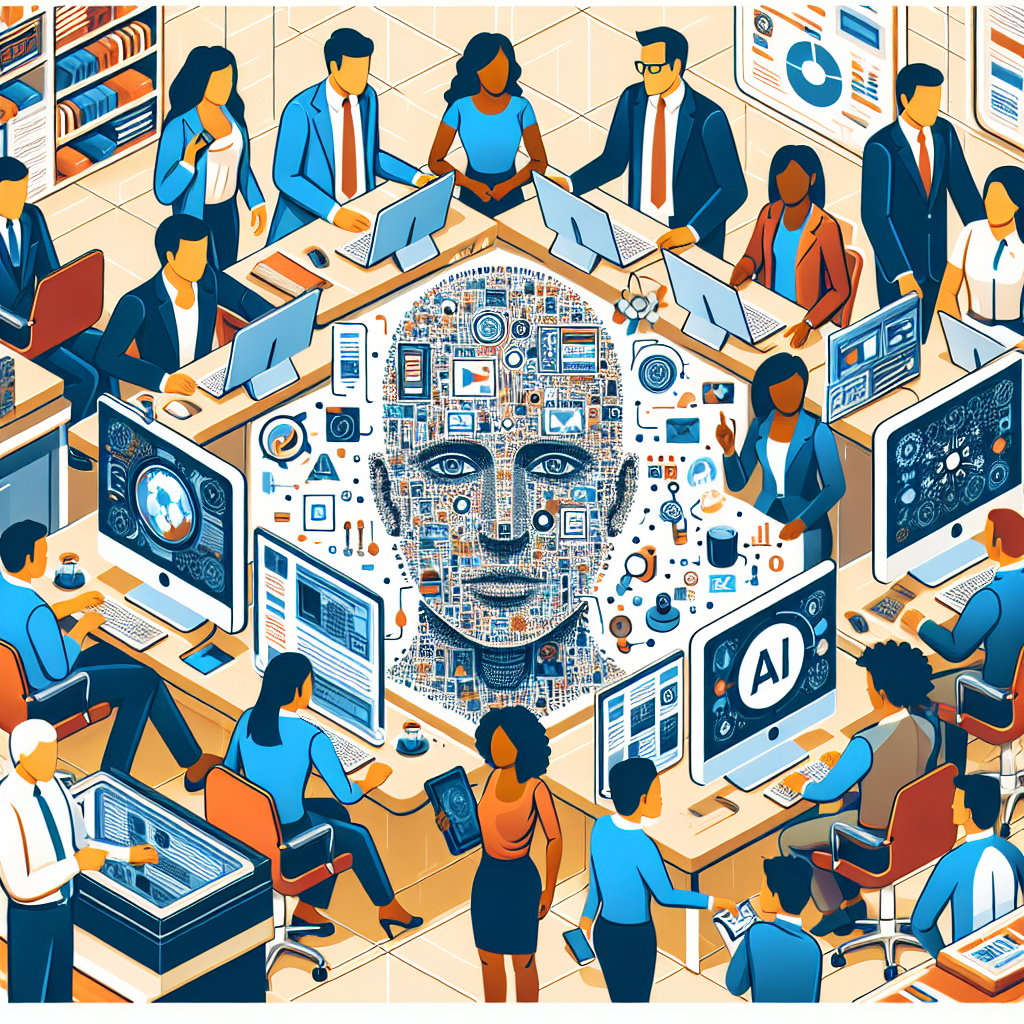Artificial Intelligence (AI) has become an integral part of many industries, including journalism. In the newsroom, AI is being used to help journalists work more efficiently, uncover new story angles, and engage with audiences in innovative ways. One key aspect of AI in the newsroom is its ability to facilitate collaboration among team members, ultimately leading to stronger teams and better storytelling.
AI tools can help newsroom teams work together more effectively by streamlining processes, providing insights and data that can inform decision-making, and automating routine tasks. This allows journalists to focus on more high-level work that requires human creativity and critical thinking, while AI handles the more mundane aspects of the job.
One way that AI can facilitate collaboration in the newsroom is by providing real-time data and insights that can help journalists identify trends, uncover new story angles, and make informed decisions about which stories to pursue. For example, AI-powered tools can analyze social media trends, web traffic data, and other sources of information to help journalists identify stories that are resonating with audiences and develop content that is relevant and timely.
AI can also help newsroom teams work more efficiently by automating tasks such as fact-checking, transcribing interviews, and generating headlines. This frees up journalists to focus on more creative and strategic aspects of their work, while AI handles the more repetitive and time-consuming tasks.
Furthermore, AI can help newsroom teams collaborate more effectively by providing a centralized platform for sharing information, collaborating on stories, and communicating with team members. AI-powered tools can facilitate real-time collaboration, allowing team members to work together seamlessly regardless of their physical location.
Overall, AI is transforming the way newsroom teams collaborate and work together, ultimately leading to stronger teams and more impactful storytelling. By leveraging the power of AI, newsrooms can streamline processes, improve decision-making, and engage with audiences in new and innovative ways.
FAQs:
Q: How can AI help newsroom teams work more efficiently?
A: AI can help newsroom teams work more efficiently by automating routine tasks, providing real-time data and insights, and facilitating collaboration among team members. This allows journalists to focus on more high-level work that requires human creativity and critical thinking.
Q: What are some examples of AI-powered tools that newsroom teams can use?
A: Some examples of AI-powered tools that newsroom teams can use include tools for analyzing social media trends, automating fact-checking, transcribing interviews, generating headlines, and facilitating real-time collaboration among team members.
Q: How can AI help newsroom teams engage with audiences in new and innovative ways?
A: AI can help newsroom teams engage with audiences in new and innovative ways by providing insights and data that can inform decision-making about content creation, identifying trends that resonate with audiences, and personalizing content to individual preferences.
Q: What are some challenges that newsroom teams may face when implementing AI?
A: Some challenges that newsroom teams may face when implementing AI include concerns about job displacement, data privacy and security issues, and the need for training and upskilling team members to use AI effectively.
In conclusion, AI is transforming the way newsroom teams collaborate and work together, ultimately leading to stronger teams and more impactful storytelling. By leveraging the power of AI, newsrooms can streamline processes, improve decision-making, and engage with audiences in new and innovative ways. As AI continues to evolve and become more integrated into the newsroom, the potential for collaboration and innovation among newsroom teams is endless.

